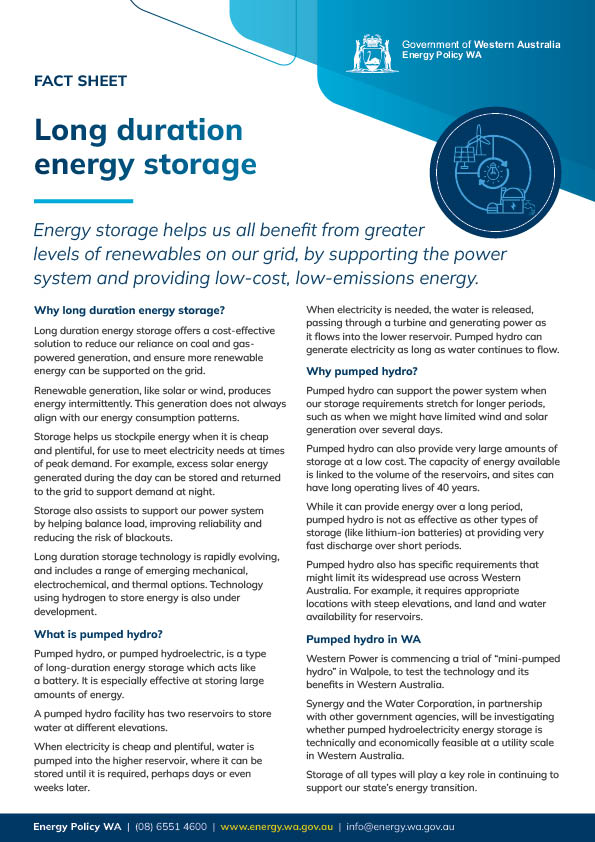Why long duration energy storage?
Long duration energy storage offers a cost-effective solution to reduce our reliance on coal and gas-powered generation, and ensure more renewable energy can be supported on the grid.
Renewable generation, like solar or wind, produces energy intermittently. This generation does not always align with our energy consumption patterns.
Storage helps us stockpile energy when it is cheap and plentiful, for use to meet electricity needs at times of peak demand. For example, excess solar energy generated during the day can be stored and returned to the grid to support demand at night.
Storage also assists to support our power system by helping balance load, improving reliability and reducing the risk of blackouts.
Long duration storage technology is rapidly evolving, and includes a range of emerging mechanical, electrochemical, and thermal options. Technology using hydrogen to store energy is also under development.

What is pumped hydro?
Pumped hydro, or pumped hydroelectric, is a type of long-duration energy storage which acts like a battery. It is especially effective at storing large amounts of energy.
A pumped hydro facility has two reservoirs to store water at different elevations.
When electricity is cheap and plentiful, water is pumped into the higher reservoir, where it can be stored until it is required, perhaps days or even weeks later.
When electricity is needed, the water is released, passing through a turbine and generating power as it flows into the lower reservoir. Pumped hydro can generate electricity as long as water continues to flow.
Why pumped hydro?
Pumped hydro can support the power system when our storage requirements stretch for longer periods, such as when we might have limited wind and solar generation over several days.
Pumped hydro can also provide very large amounts of storage at a low cost. The capacity of energy available is linked to the volume of the reservoirs, and sites can have long operating lives of 40 years.
While it can provide energy over a long period, pumped hydro is not as effective as other types of storage (like lithium-ion batteries) at providing very fast discharge over short periods.
Pumped hydro also has specific requirements that might limit its widespread use across Western Australia. For example, it requires appropriate locations with steep elevations, and land and water availability for reservoirs.
Pumped hydro in WA
Western Power is commencing a trial of “mini-pumped hydro” in Walpole, to test the technology and its benefits in Western Australia.
Synergy and the Water Corporation, in partnership with other government agencies, will be investigating whether pumped hydroelectricity energy storage is technically and economically feasible at a utility scale in Western Australia.
Storage of all types will play a key role in continuing to support our state’s energy transition.
Download Fact Sheet
This information is available in a downloadable PDF factsheet


